The train easily transferred us from Agrigento to our next destination – Catania. And here we are, in one of the most visited and famous cities in Sicily, the second biggest city in Sicily after Palermo. The apartment we’ve rented was a bit far from the train station, but in a walking distance. The location couldn’t be better, as it was exactly next to the Duomo square. Just open the balcony door, and the Duomo was right here. But it wasn’t our best chosen place to stay, because it was full of mosquitos, not working equipment, not the best owner, etc. However, it wasn’t a big problem, as we just had to stay here a night. After check-in we left our luggage in the room and went out for sightseeing and some food of course.
Definitely, the first place that we had in our view was Piazza del Duomo. This is considered as a heart of the city and is the main meeting place for the locals. It has quite active and vivid nightlife thanks to the big amount of students and youth. But it is more famous as a set piece of contrasting lava and limestone and is a Unesco World Heritage Site. Piazza is surrounded by buildings in the unique local baroque style, where the main and the most important onw is the grand Cattedrale di Sant’Agata. Here in this square you can also see the symbol of Catania – the Fontana dell’Elefante (or Elephant fountain) created in 1736. At the base of the fountain there are two sculptures that represent the main rivers of Catania, the Simeto and Amenano, and above these you have the elephant made from black lava and basalt with an Egyptian obelisk on its back. It is also called U Liotru, which comes from local legends that tell the story of Eliodor, a Byzantine magician who rode an elephant into the town. When the elephant was made it was named after the magician, which through time became Liotru. For this reason people of Catania have considered the fountain to be a magical statue, and believe that it is able to protect the town from the eruptions of Etna.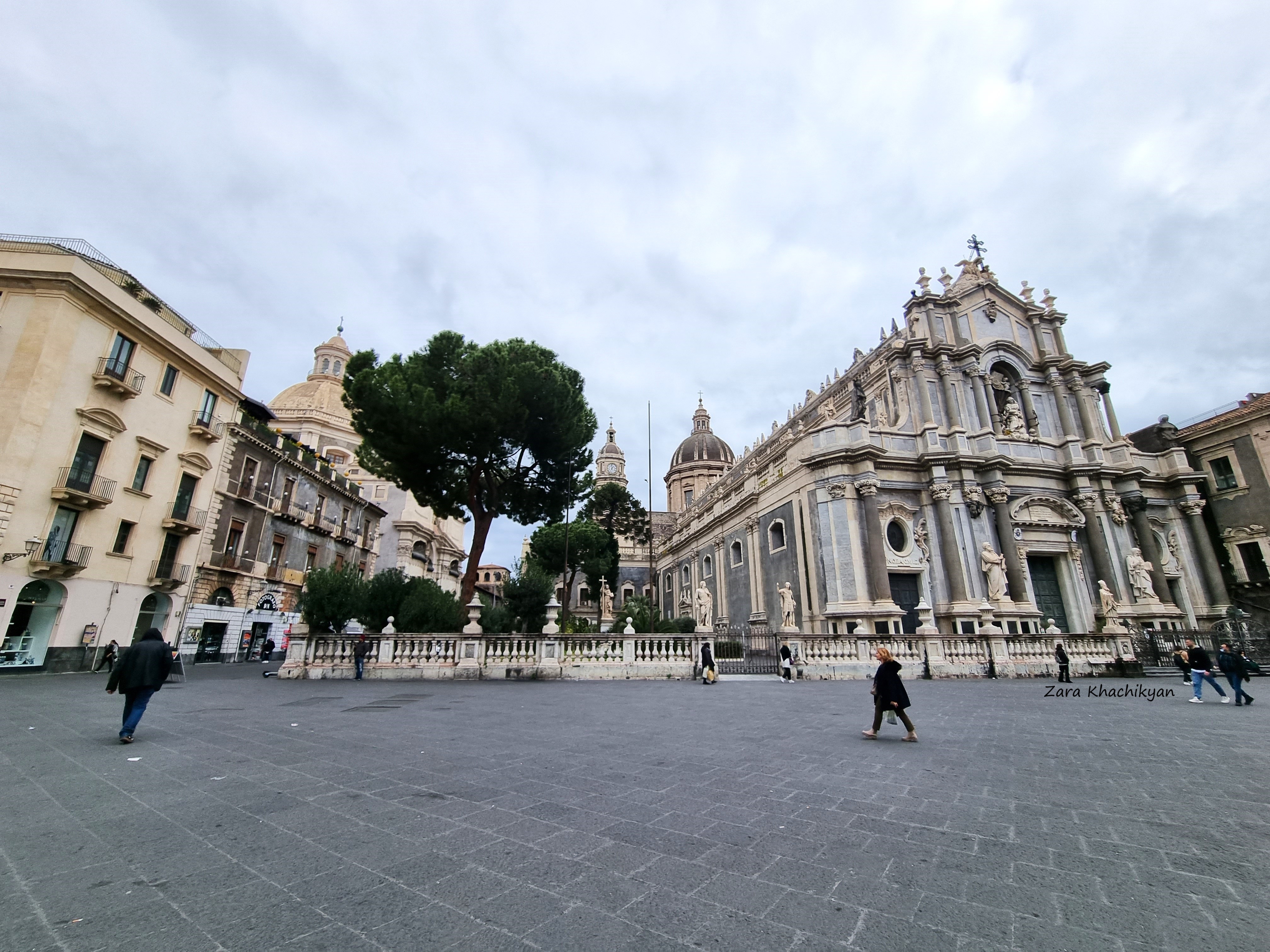
But this is not the only famous and important fountain in this square. The other and younger one is Fontana dell’Amenano (also called acqua o’linzolu by locals), which marks the entrance to Catania’s fish market. This is a Carrara-marble fountain created in 1867 and was a tribute to the River Amenano, which once ran overground and on whose banks the Greeks founded the city of Katáne. After the eruption of Etna in 1669 the river was covered by lava but still continues its underground course before reaching the sea. At the center of the statue there is a young man’s statue with cornucopia, which symbolises the fertility. At the sides you can also see kneeling tritons. It’s said that in the past women went to wash clothes in this place.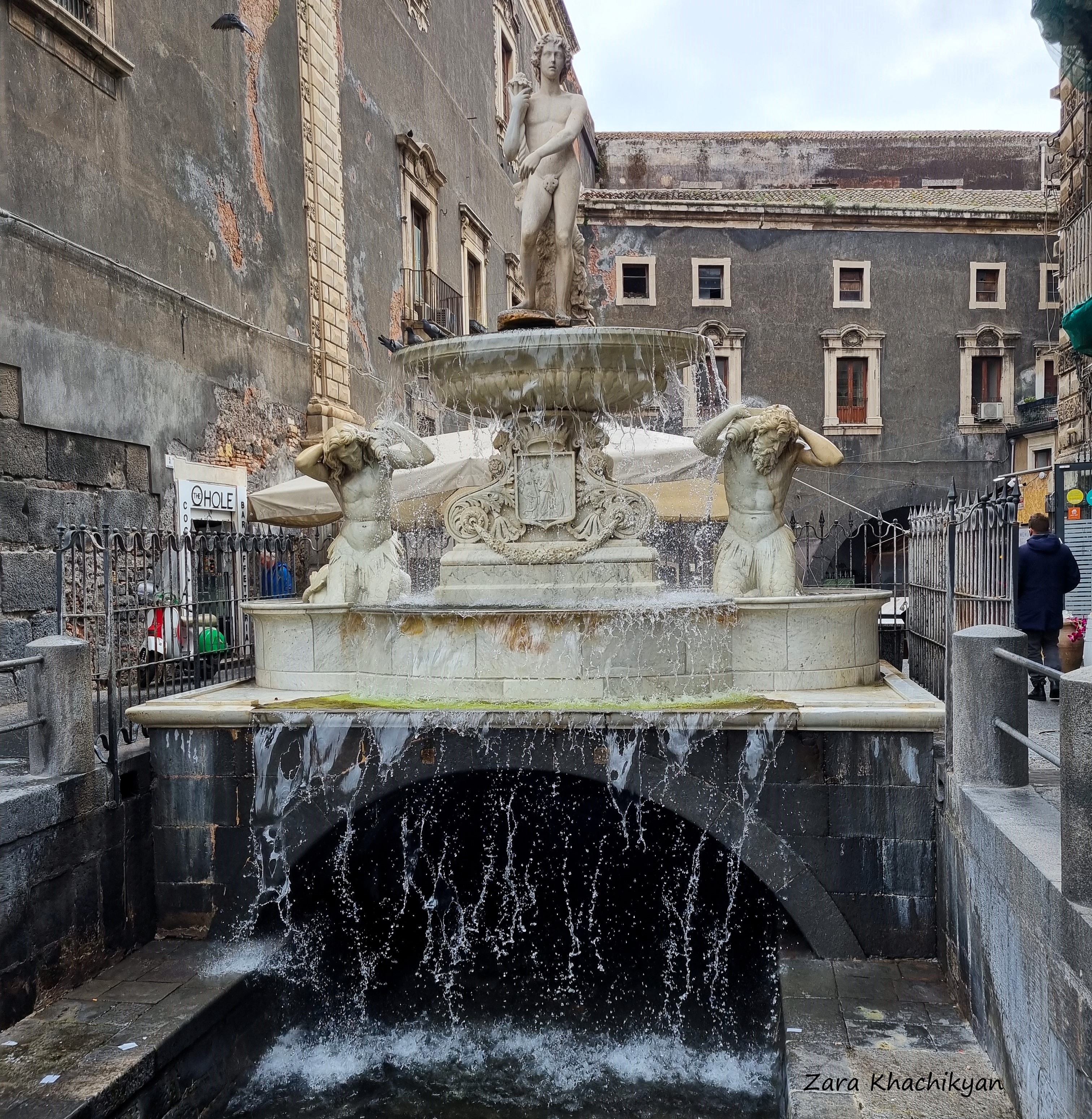
By the way, the fish market (La Pescheria) is also a must visit place here. Every morning you can find fresh fish and other seafood, such as mussels, clams, shrimps and prawns, snails and much more. Besides seafood you can also find fresh and juicy fruits and vegetables. We bought here some wild strawberries and bloody oranges (as locals call it – Sanguinello), which are tipical fruits of Sicily and are healthiest choise for our body. If you will be in Sicily (or you can find it in other cities in Italy), don’t hesitate and try it. You will appreciate the unique taste. And don’t mix it with the known “red” oranges you see in supermarkets. These are totally different!



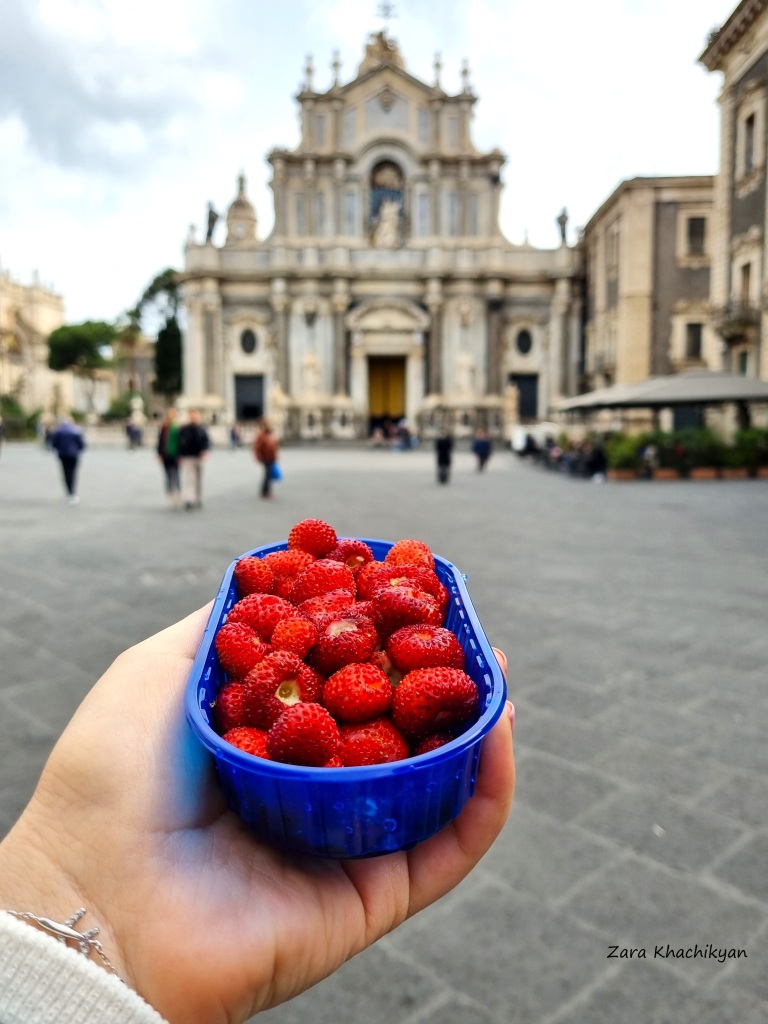

But let’s go to discover historical treasures of Catania. The first one in the list was Roman Theater (Teatro Greco) from the 2nd century A.D. The Greek-Roman Theater and the nearby Odeon are located in the historic quarter of Catania. It consists of a larger theatre and a smaller semicircular theatre (Odeon). The main theather’s Cavea (the auditorium) section could accomodate around 7.000 people. Because of the different volcanic eruptions and earthquakes, in time the ground level has dropped and now the lower part of the building, especially the orchestra area, is washed by the Amenano’s waters. Odeon is placed higher than the theater. Its capacity is significantly less than theatre’s one and can accomodate a small audience of about 2.000 people. The building was used for performances of music and poetry and even today the Odeon is used for performances of summer shows. Some of the items that were discovered during excavation works are also displayed in a small museum inside, which you will pass before exiting the site. Don’t miss a visit in this archaeological ruins as it’s a nice break from the hustle of the city. Yeah, and it is part of the Parco archeologico greco-romano di Catania!
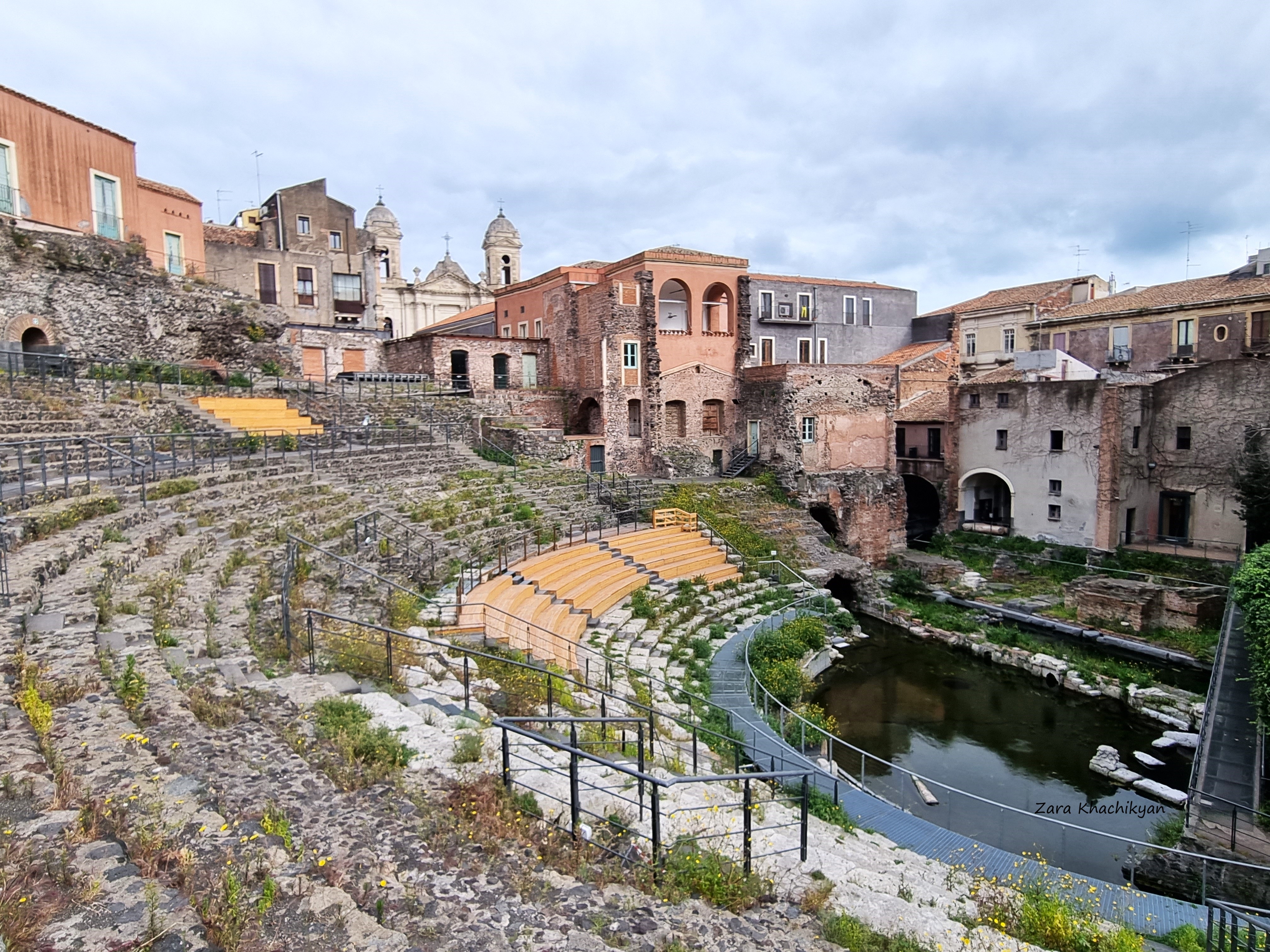
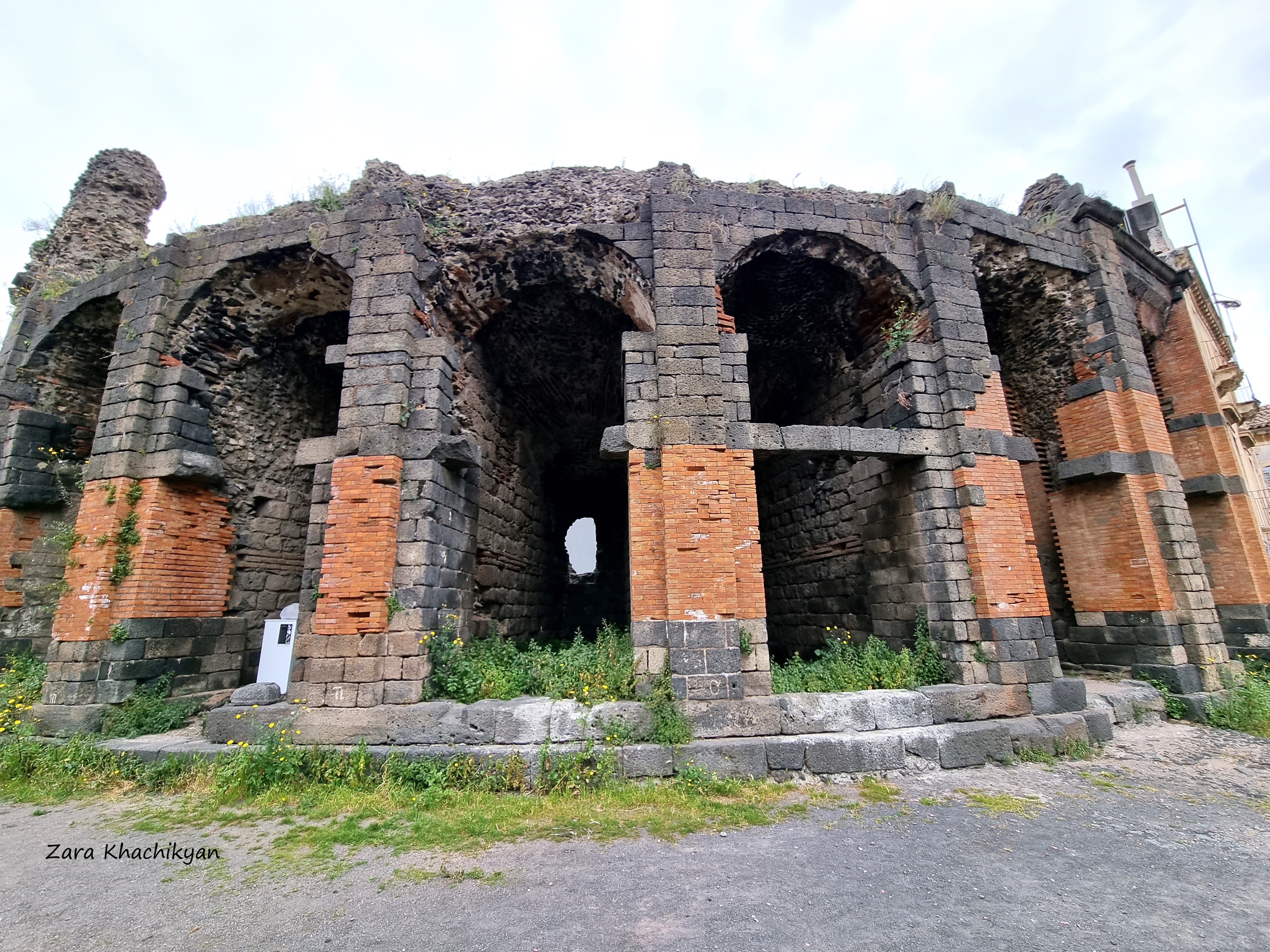
Useful Information
Address: Via Vittorio Emanuele II 266, Catania
Opening hours: Daily 9am–5pm
Tickets: 6€ ticket for adults, 3€ for people between 18 and 25 and free for people under 18
Let’s go further to see what can we find in the streets of Catania. One of the main sites of interests is considered to be the Castello Ursino. This is a 13th century castle built as a Royal Residense. Originally the castle was built on a cliff looking out to sea, but during volcanic eruptions and earthquakes it is almost a kilometer inlandtoday. There was a time that the museum was used as a prison. During the eartquake in 1693, which was the most powerful in Italian recorded history, this castle was one of the few buildings, that has survived. Today it houses a Museo Civico, a museum, which displays a big number of artifacts and artworks, mosaics, statues and iscriptions. It was quite interesting to walk through the halls and corridors of this huge castle, which played a big role on Sicilian history and today is one of the symbols of Catania.

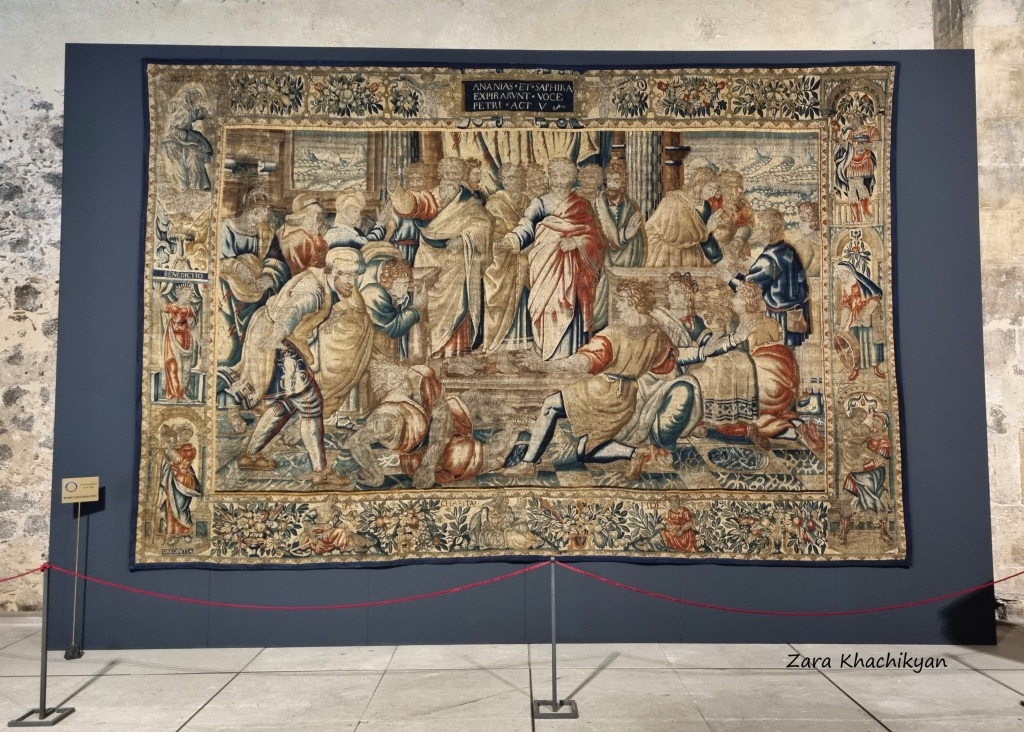


Useful Information
Address: Piazza Federico II di Svevia, 95121, Catania
Opening hours: Daily 9:30am–7pm
Tickets: 6€ ticket for adults, 3€ for people between 11 and 18.
If there is any exhibition in the museum, additional charges may apply.
After visiting historical and cultural sites it’s time to just stroll on the streets of Catania and see what they can show us else. We started from the Via Garibaldi, which starts from the Piazza del Duomo. So we just started to walk and look around. Honestly, didn’t see anything interesting that would cought our attention. But at the end of the street there was a majestic Porta Garibaldi standing, a triumphal arch built in 1768. It was built to celebrate the marriage of the Bourbon king Ferdinand I of the Two Sicilies to the Austrian princess Maria Carolina d’Asburgo-Lorena and originally was called Porta Ferdinandea. As you can see, the monument is built using black and white blocks, from which white stones are brought from Siracusa, while the black ones are local, used from lava stones. There is a big clock on top of the monument today, but originally there was a medallion with the portraits of the two kings. On top of the clock, as well as on the other side of the arch you can see the rising phoenix, a symbol of rebirth of Catania and its people after several eartquakes and eruptions it passed. Even under one of those phoenixes you can see an underlined sentence saying “Melior de cinere surgo“, which means “I can born again from the ashes even more beautiful”. Very impressing, indeed. Pity didn’t take a picture from the other side of the arch, so I could show you the monument from all angles.
The other street that we took for a walk was Via Etnea, also starting from the Piazza del Duomo. This street was more active and full of people. On every side there were small and big shops, where you could find any kind of souvenirs, households, clothes and accessories. The University of Catania was also located on this street, not very far from Piazza del Duomo, as well as several churches and basilics. In general, you can find churches on every step in Catania. On this street is also the famous gelateria of Catania – Don Peppinu, which is said to be the first gelatery is Sicily. The shop was quite big, serving big variety of ice cream flavors, as well as different local pastries. Unfortunately we skipped this place, but surely it’s worth to try (next time will do 🙂 ) But instead we had a delicious desserts in Insigne Cafe (on Via Etnea, just 7 min walk from the Piazza del Duomo). Here you can have some of the best local pastries (Sicilian and Catanian) – Cannolis with different fillings, such as classic ricotta, pistachio, Cassatella di sant’Agata (lit. breast of St. Agata) picture of which you can see below (I know it’s not the best quality, but just for you to see how it looks like), croissants and much more. If you’re hungry, you can enjoy a nice lunch here too. By the way, there is a horrifying legend about the breasts of St. Agata, read it below and you’ll understand why the dessert Cassatella di sant’Agata looks like breasts. 
The legend says:
A girl named Agata was born in a rich and noble family and when she was 15, she made a vow of virginity and dedicated herself to the church and was teaching young followers about the Christian faith. When she was 21, in the years 250 to 253 AD, the prefect of Catania named Quintianus saw her and fall madly in love with her. But Agata rejected the amorous advances of the Roman prefect Quintianus, who thought he could force her to marry him. This was during the persecutions of Decius, and knowing that Agata was Christian, Quintianus reported her to the authorities and though he could punish Agata this way and force to change her mind. Quintianus sent Agatha to Aphrodisia, the keeper of a brothel, and had her imprisoned there. However, the punishment failed. Then Agatha was then imprisoned, suffered repeated tortures and during one of those tortures her breasts were torn off with tongs. Agata was sent back to her cell without any medical threatment, but during the night St. Peter the Apostle appeared to her and healed her wounds. After that Quintianus decided to burn Agatha at the stake, but at that moment an earthquake prevented this from happening, and she was instead sent to prison. Agatha died in the prison on February 5, in the year 251. She has become the patron and protector not only in Catania, but all of Sicily. An annual festival to commemorate the life of Saint Agata takes place in Catania, from 3 to 5 February.
Now it’s time for dinner, maybe a light one, because we had a pizza for lunch, as this is how it is done in Italy, one whole pizza per person. We were not starving but had to eat something. And what else if not trying some seafood? We found a small restaurant Siccia just on the Piazza del Duomo, where they were serving fried seafood mix, with a view of Cathedral. We took it together with local lemonade called Aranciata (be careful while ordering it in any other places in Italy, even if it is written like that in menu, you might be served with usual Fanta, as it is “made” from orange, and Arancia means orange in italian!). The light dinner with lemonade was very tasty and satisfying. And after some more walks in the night streets of Catania we went to our room to sleep. That was a tired day, but we still had an unfinished thing to do here.
However, the signature of Catania is the Pasta alla norma, which consists of fried chunks of aubergine, a rich tomato sauce and salty ricotta cheese. We tried it in Palermo though, for me it was ok, but not the best. But of course, it’s a matter of taste, so worth a try to see if you like it or not 😉


In the morning we still had some time before our next train adventure and walked towards the Basilica di Sant’Agata, the massive cathedral on the Piazza del Duomo. This is a Norman Cathedral dating back to late 11th century, dedicated to virgin and martyr Sant’Agata, the patron saint of Catania. The Cathedral is also known as Catania Cathedral or Duomo di Catania (it.). This is a Roman Catholic Cathedral, which was the seat of the Bishops of Catania until 1859, and after became the seat of the Archbishops of Catania. The cathedral was periodically damaged during earthquakes, volcanic eruptions, fire. But the main destruction happened during the major earthquake in 1693 and only ruins left after. After each damage the cathedral was restored in its original gothic style. 
Next to the Cathedral, overlooking Via Vittorio Emanuele there is the St. Aghata’s Abbey (AKA Badia di Sant’Agata). This is a former adjoining monastery and the abbey that were built on the ruins of the ancient church and monastery dedicated to Saint Agatha, which was ruined during earthquake in 1693. From the dome you can have the 360-degree panorama, and enjoy the view over the city’s rooftops if you’re lucky to have a clear sky, Mt Etna to the north (we were not that lucky and could just imagine what it would look like). I don’t know how crowdy it can be, but the time we climbed up by narrow stairs, we were the only one in the roof (just to remind, it was early morning and we were the first ones to enter the church after opening). It is worth to visit the church to admire the frescoes and paintings inside, which is free, but is definitely worth to pay 5eur for a ticket to the dome to have this fantastic view from the top. I believe it would be another awesome experience to be here on the sunset and appreciate the golden colors of the sky.
And with this our “mission” in Catania was completed, but not in Sicily yet. The most interesting experience was still waiting for us, but this will be another story 😉
One thought on “Guide to Catania: Places to Visit, Things to Eat”